BY FRANCIS ANEKWE OBORJI
“Which way Nigeria… which way to go? I love my father’s land. Oh yes, I want to know, which way Nigeria is heading to?” (Sunny Okosun).
At a time like this in Nigeria, the above citation from the musical lyrics of one of the country’s greatest musicians of our time, late Sunny Okosun, needs remembering. I have chosen it as a fitting introduction to our article: Our present article is about ongoing debate in the nation’s political arena on restructuring as well as the agitations of those seeking self-determination of their indigenous people through referendum.
In whichever case, each is a genuine concern about Nigeria’s future. They are all deliberating about the future direction of the country, not just on transitory politics and the economy, but the preservation of the continued existence of a people – each group of the diverse cultural and religious components that constitute the entity called Nigeria. This is recommendable. Because Nigeria is really a multi-cultural, multi-ethnic and multi-religious entity with a rare peculiarity of pluralism and diversity in modern world history.
Our proposition in this article is that Nigeria is today more than ever at the crossroads of choosing between ‘the center’ or creation of ‘multiplicity of centers’ in its search for viable political structure and culture. To paraphrase the Kenyan author and novelist, Ngugi wa Thiong’o, in Nigeria today, ‘there is need of moving the center to give room for pluralism of centers’ for the sake of our present and future generations. In fact, for the sake of preservation of human existence, dignity, freedom, justice and equality of all the citizens of the country.
Advertisement
From time immemorial, choosing between the two sides of the debate – restructuring to achieve true federalism or confederation, and self-determination through referendum, have remained Nigeria’s greatest headache. The debate also shows that no matter how we may want to deny it, Nigeria is not yet the nation-state desired by majority of its citizens, both old and young, home and abroad. In other words, something urgently, needs to be done to salvage the situation.
Sometime in 2010, I presented a paper in an International Congress organized in my university in Rome to mark the centenary celebration of the First International Missionary Conference ever held, which took place at Edinburgh in 1910. Many of the speakers came from Europe and Latin America. Others, from Asia. I was the only African among the speakers.
In my paper, titled: “Edinburgh 1910 and Christian Identity Today: An African Perspective”, I criticized the old paradigm of Christendom which Edinburgh 1910 Conference epitomized. Edinburgh 1910 Conference fostered a unidirectional vision of mission and divided the world into the ‘mission land’ and ‘mission field’, in which the West was the sender and the non-West the receiver.
Advertisement
With this type of missionary outlook, it is hardly surprising that non-Western representation at the Edinburgh 1910 Conference was limited to a handful of Indian, Chinese, and Japanese Christians. Not a single African was present at the Edinburgh 1910 Conference. This means that the African mission reviewed at Edinburgh 1910 never considered the local community and African Christians as full participants and protagonists in Christian mission.
The buoyant churches in Africa, including the Coptic Church of Egypt, Ethiopian Orthodox Church, African Independent Churches of Simon Kimbanguist of Congo, Harist Wade Church in West Africa, among others, as well as native African pastors of mainline (missionary) churches (African Catholics and Protestants), were not invited to participate at the Edinburgh 1910 Conference. They were simply, ignored.
European missionaries were chief source of information and insights about African societies, traditional religion and culture discussed at the Edinburgh 1910 Conference. There is simply no indication that opinion of non-Western Christians was directly sought on this matter. The participants at the conference applied vigorously the derogatory term “animism” in reference to African traditional society and religious beliefs. This implies that at Edinburgh 1910 Conference, African voice and concerns were absent.
The Edinburgh 1910 Conference fostered an idea of Christianity and the world with one center, the West. However, in my paper, I challenged the Edinburgh 1910 vision of the world and Christianity. I expanded the discussion by emphasizing the African perspective of the new southward shift in Christianity. I argued for a new Christian identity in our increasingly pluralistic world, especially, now that the Christian landscape has shifted from Northern hemisphere to southern continents.
Advertisement
The contention of paper was that the West should no longer regard itself as the center of the world and of Christianity. Other centers need be recognized and accorded equal respect and freedom due to them.
Although, the Edinburgh 1910 missionary outlook still represents an important lens through which people conceive mission and respond to it. However, with the recent southward shift of the Christian landscape, each nation sends as well as receives missionaries.
I emphasized the importance of true theological reciprocity and mutuality, of communion and solidarity, mutuality and inter-dependence of cultures and religions as a major step towards overcoming the dichotomy between the older and younger churches, between Western Christianity and the Christianity of the southern continents.
In Retrospect
Advertisement
One may ask, what is the relevance of my paper on the centenary of Edinburgh 1910 Conference to the Nigerian question under discussion?
The relevance is this: What is becoming very clear to all of us is that the current debate in Nigeria about restructuring or self-determination through referendum is a call towards cultural pluralism. It is about moving the center for the emergence of multiplicity of centers in the Nigerian political landscape.
Advertisement
This moving the center for the creation of plurality of centers touches not just only on political and economic interests. It touches, above all, on the question of preservation of human existence of each of different cultural groups and nationalities, the empowerment of diverse people, centers that constitute the Nigerian state.
It is a debate about the recognition and promotion of diverse cultural identities, preservation of collective human existence of each of the groups that make-up the Nigerian nation state. In other words, Nigeria needs to transcend its present attachment to one center to embrace cultural pluralism through multiplicity of centers.
Advertisement
The struggle to move the center towards pluralism of centers in Nigeria is reflected by those of the founding fathers of African political independence. We shouldn’t forget that modern African nation states are products of both European imperialism and of the resistance waged against it by the founding fathers of African political independence in the 1960s.
Since the fifteenth century, when Vasco da Gama circled Africa for Europe, the continent and its people had remained under the European yoke, first through slave trade and later direct colonization after the Berlin Conference of 1884-1885. However, events began to change after the Second World War (1939-1945). The Second World War exposed the weakness of the colonial masters. So much so, that Africans had to be recruited to help liberate the motherland of the colonial giants.
Advertisement
Africans educated through schools set up by the colonialists and Christian missionaries soon got discontented with the injustices of colonial rule. In spite of the economic benefits which some Africans might have derived from colonial rule, ultimately this failed to satisfy the needs and aspirations of the majority. Already there was a widespread of discontent among the rural population. This widespread of discontent was demonstrated in various ways. Africans began to realize the strength they could draw from their ancestral history, and wanted to build a new and free future on the foundation of their pre-colonial past.
All these gave rise to the birth of nationalist associations and independence movements, championed by diehard African nationalist leaders like Nnamdi Azikiwe of Nigeria, Kwame Nkrumah of Ghana, Jomo Kenyatta of Kenya, Julius Nyerere of Tanzania, among others. These founders of modern African states were poised in pressing harder for independence of their various countries after the Second World War. They responded to imperialism from a variety of ways and attitudes, and especially, through cultural, intellectual, ideological, religious and political fronts.
In spite of this, they could never have shifted the center and vision as well as colonial boundaries put in place in Africa by the foreign powers. Keeping the colonial boundaries intact was part of the conditions given for granting political independence to Africa in the 1960s. The colonial boundaries and centers were declared ‘no-go areas’ for the founding fathers of modern African states if they wanted political independence of their different nations. African leaders obliged in order to secure the political independence from the colonial authorities.
Thus, on leaving the continent, the colonial authorities handed over to the first generation leaders of modern African states, a façade of political independent states, missing-up people of different ethnic groups hostile to one another and merging dismembered groups, putting all into one nation-state. Thus, most of the new African states lacked in content and purpose.
This means that the founding fathers of modern African states were themselves bound by colonial boundaries, centers and vision of their upbringing and experience. They could not free themselves from the Eurocentric basis of their vision, even where they were aware of the devastating effects of imperialism on the subjects, as in their declaration to retain the existing colonial structures at their OAU summit in early 1960s. Subsequent African leaders, it would seem, have also failed to address the arbitrary colonial boundaries.
The colonial boundaries and vision of centralized center in Africa are the major root causes of political instability and the difficulty in the actualization of real nationhood in many African countries. They also contribute to the difficulty in finding lasting solution to the ravaging wars and counter wars in different parts of the continent. It enthroned in Africa a system of divide-and-rule.
The situation has continued to produce dictators, ethnic and religious bigots as political leaders and elites: indeed, tyrant leaders, who specialize in using government machinery to silence and dominate the other ethnic groups sharing the same nation state with them. They use religion and ethnic differences as weapons for power and domination over other ethnic groups in the country. So much so that in many countries of Africa today, there is what is called ‘the struggle for second independence from the dominant ethnic-group.’
In nutshell, this is the scenario Nigeria has been grappling with since its amalgamation in 1914 and especially, from the time of political independence in 1960. It is the driving force in the ongoing debate for restructuring or self-determination through referendum in the Nigerian political landscape.
Moving the Center: Lessons from History
The history of humanity teaches us that in this earthly existence, there should be no permanent center, political power or structure under which peoples of diverse cultures and languages should be condemned to subject themselves in perpetuity. For untold ages, every tribe, every people, thought that it lived at the center of the world, not only geographically, but in every other respect as well. Each nation, each tribe, believed it was the measure of all things. Thus, it could contemn other nations and tribes, make war on them, plunder them, and enslave them.
This way of thinking, which is far from having disappeared today, is called “ethnocentrism”. Each tribe (Greek: ethnos) made itself the center of all things, and looked down on all other tribes by reasons of their origin, color, language, or religion. The biblical world fit this general human experience exactly. The “earth” was coextensive with one people’s field of vision. Only familiar persons and groups counted as part of the world. Thus, the great flood was said to have covered “the whole earth” (Genesis 7:18-23), and famine to have prevailed not only in Egypt, but “throughout the world” (Genesis 41:57).
However, in its exordium as in its conclusion, the Bible bursts the bonds of this narrow purview, and decries, as through a telescope, the distant “ends” of a far broader earth. The first eleven chapters of Genesis constantly speak of ha-Adam – the human being, humanity. God was making history by way of the whole humanity, then. God’s first love was the whole human race.
The story of the Tower of Babel illustrates in more dramatic way, the God who abhors human beings insidious intention to create one permanent center and subject all other peoples of different tribes and languages into that one hegemonic vision and political structure. As I argued in an earlier article on the theme of “African the Antics of Anti-immigration Walls”, we should bear in mind that the dispersion and multiplication of the races described in Genesis chapter 10, is behind the “tower of Babel” narrative. The “tower of Babel” signifies anti-cultural pluralism. A central aim in the building project of Babel is to forestall further multiplicity of centers, cultural pluralism: “otherwise we shall be scattered abroad upon the face of the whole earth” (Genesis 11.4).
Thus, Babel, in essence is a metaphor for cultural absolutism. It stands for monolithic human social projects that perpetuate a single center, a singular experience and attempt to impose the name and language (or culture) of one group on all others. It exemplifies the secular ideal: idolatry of human achievement (“let us build”), the quest for power, for immortality (“a name”), and hegemonic advancement of one cultural group (“one language”) at the expense of messy, cacophonic, cultural diversity. The Babel project stands in opposition to cultural pluralism and diversity as well as to diasporic scattering of the nations and peoples in a way that allows them to experience the God of Heaven through a multiplicity of contexts and a diversity of cultural experiences.
Therefore, cultural diversity is a strongly biblical idea; ‘the notion of a single or permanent center and global culture is not.’ As the Apostle Paul teaches: “From one ancestor he made all nations to inhabit the whole earth, and he allotted the times of their existence and the boundaries of the places where they would live (i.e., cultural environment), so that they would search for God” (Acts 17:26-27). In other words, it is within the multiplicity of centers, particularity of culture, that human ideas, human genius, and human creativity find their fullest expression. It is also within the particularity of cultural existence that God of Heaven is revealed and encountered.
All human cultures are, of course, deformed by human sinfulness and are in need of redemption; but no culture or cultural system has a greater capacity than any other for facilitating responses to, or experience of the divine. So integral is cultural specificity to God’s plan of universal salvation that it endures until the end of the ages when “a great multitude …, from every nation, from all tribes and peoples and languages, [stand] before the throne and before the Lamb” (Revelation7:9).
Thus, as scripture closes, it looks no longer on our first beginnings. Now its gaze is directed upon humanity’s future – nor indeed its gaze alone, but its commission as well: “Go! Proclaim! Deliver human beings from the powers of darkness”, and this “to the ends of the earth” (Acts 1:8). And by the “ends of the end” were meant not merely the geographical limits of known world of the time, but the absolute limits of any future time. As these limits expanded, then, so would the task and commission.
While the biblical world embraced the entire world only in retrospect and prospect, the ancient Roman world fell prey to the vision of ‘one permanent center.’ Rome not only knew, but subjugated and colonized, the lands of the East to the Persian Gulf and the Caspian Sea, of the North to today’s southwest Germany and England, of the West to Spain, and of the South to north Africa and Egypt. However, the decline of the old Roman world came with the degeneration of the upper classes, whose comportment set the tone for the rest of the people. Despite financial incentives for the generation of offspring, these classes died out, and folk from the provinces crept into the army and the administration, until the great processions of the peoples (multiplicity of centers) finally sounded the death knell of the Roman Empire.
From the ruins of the Roman Empire sprang the Western world. The medieval empire of the West was coextensive with what its leaders viewed as the civilized world of the time. To the West lay only the ocean, with its seemingly impenetrable frontier. Midway through the second millennium, suddenly, powerfully, the Western world exploded in every direction, colonizing peoples of the southern continents, and at the same time subjugating Africans into slavery in the ‘New World’ of the Americas.
Henceforth, this broadened world could be called the European world: Europe held all the reins of world politics and world trade firmly in hand (even till date), and drew a sharp distinction between metropolis and periphery, colonial power and colony, etc. Without so much as a by-your-leave, these other peoples were now under the “protectorate” of Europe, and in its shadow. Now they were the white male’s training field.
Given this Eurocentric, triumphalistic colonial history, it is surely understandable that since 1950s Africans, Asians, and Latin Americans have begun to write their own history, and to rub Europeans’ noses in it until they begin to have some idea of what it was like for the peoples of the colonies to feel and suffer their presence.
The zenith and partial demise of the European hegemony came simultaneously, with World War II. As noted before, colonial nations still rallied to the European cause, but immediately thereafter filed their claims for indemnification in the form of demands for national independence. Within two decades, practically, all Asia and Africa were decolonized. Today, these new nation states hold a two-thirds majority in the world forum of the United Nations.
So, one after another the so-called primal world, the biblical world, the Roman world, and Western world of the old have seen their day. The world of cultural pluralism is now here. The story of its maturation has been a long one, but its hour has struck. The day of mature world community of all peoples, founded on the bedrock of equal rights, has dawned. The United Nations gave expression to this new sense of ours on December 10, 1948, in its Universal Declaration of Human Rights.
This means that the call for multiplicity of centers is a call for inclusiveness in political leadership and structures of governance instead of the present exclusivity that favors only the privileged few and their region. Multiplicity of centers is about moving from self-centered permanent center to pluralism of centers.
Conclusion
The last centuries were powerfully, marked by nationalism of self-centered structures of governance at the expense of peoples of other cultural identities. We have only to see the monuments to the heroes of the past that adorn the great squares of the capitals of Europe and those of their former colonies. How often we read on their pedestals: “They Served Their People.” But they did so by making war on their neighbors and subjugating them, so as to be able to build a colonial realm about their homeland. We no longer have need of heroes of this sort. What we need today are heroes of cultural pluralism and multiplicity of centers, who will throw in their lot with humanity and help build a new society founded on respect for human dignity, freedom, justice, peace and fraternity.
When and where will these visions have their prophets? Solomon the Wise said: “A people without visions comes to dust” (Proverbs, 29:18), and in his reflection, we hear the strains of musical lyrics of the Nigerian musician Sunny Okosun: “Which Way Nigeria… Which Way to go?” – Nigeria needs prophets, leaders with visions, capable of transcending the myopic and narrow-mindedness of the everyday – persons who will reach out, in the spirit of God, to proclaim the liberty of all the children of God, and to realize, all that God has in mind for humanity.
Therefore, in our Nigerian context, moving the center to pluralism of centers, is a call for workable political structure that should take into consideration our pluralism in all ramifications, for emergence of a truly modern, secular and democratic nation state, we can all call our own. Because, in the eyes of many, Nigeria as it is presently structured, is yet to prove itself a home to majority of its citizens. A good number of Nigerian citizens still feel like strangers in their fatherland because of the way Nigeria is presently structured.
Our political class and elites need courage to do the right thing for the future of the people. In all discussions, the people must come first, because, they matter and count more than any other preoccupation of the nation state. The Nigerian state must learn how to put the welfare of all its citizens first in all deliberations.
Without an enable environment – a workable political culture in Nigeria, no economic growth program or the so-called anti-corruption crusade will ever yield the desired result. Not even security – the fight against terrorist groups, or any other existing militants in the country, will ever yield any positive result. The country will continue to live in denial until a workable political structure that respects the liberty and equality of all Nigerians is in place.
Oborji, a Roman Catholic priest, sent this from Rome, where he is professor of missiology (mission theology) in a Pontifical University
Views expressed by contributors are strictly personal and not of TheCable.
1 comments
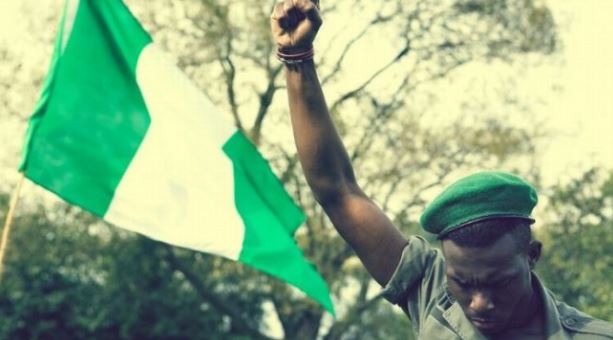
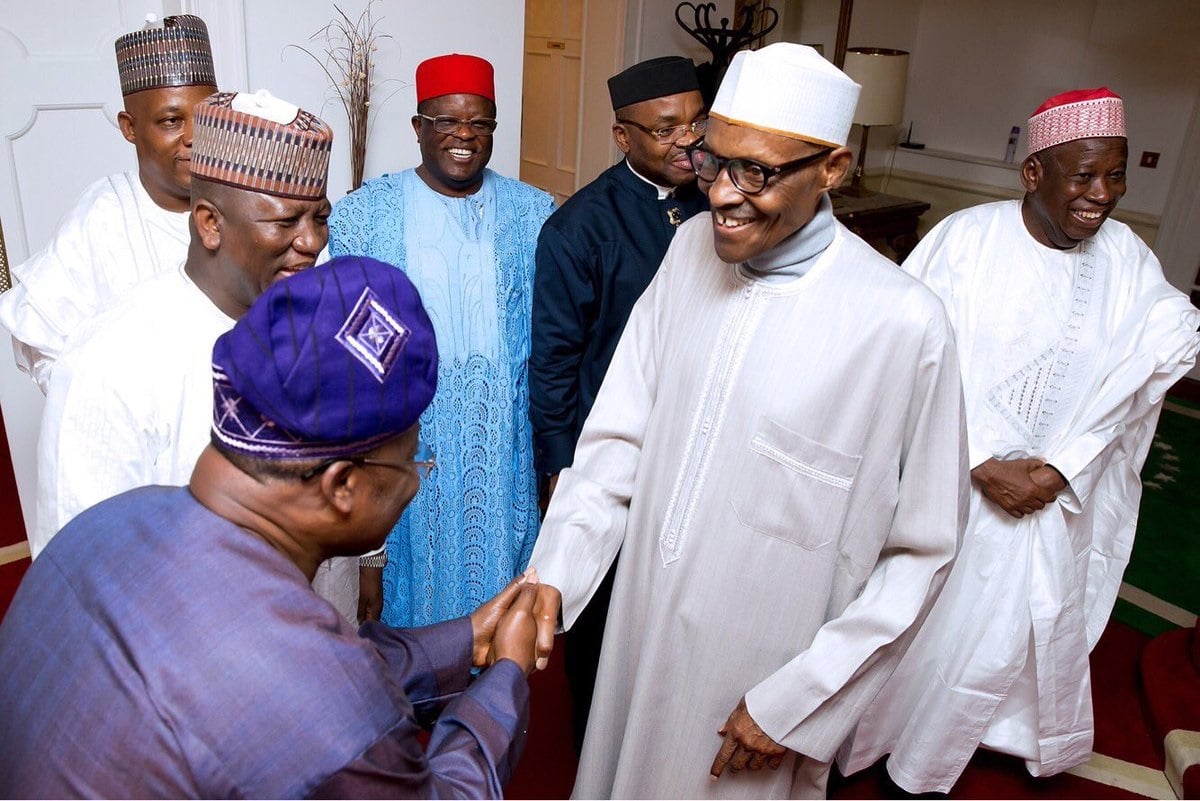
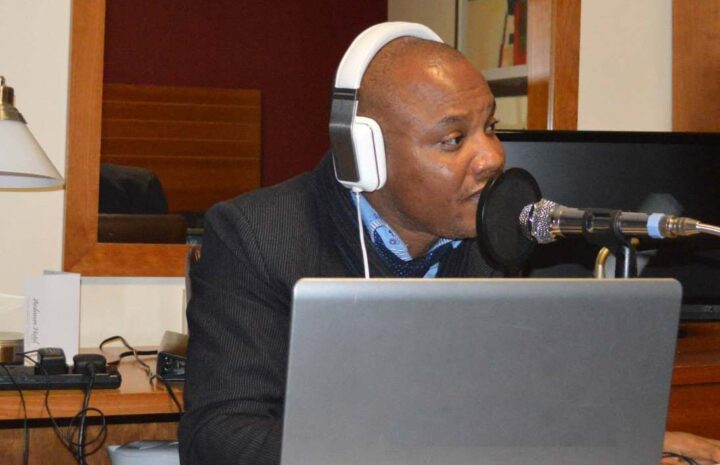
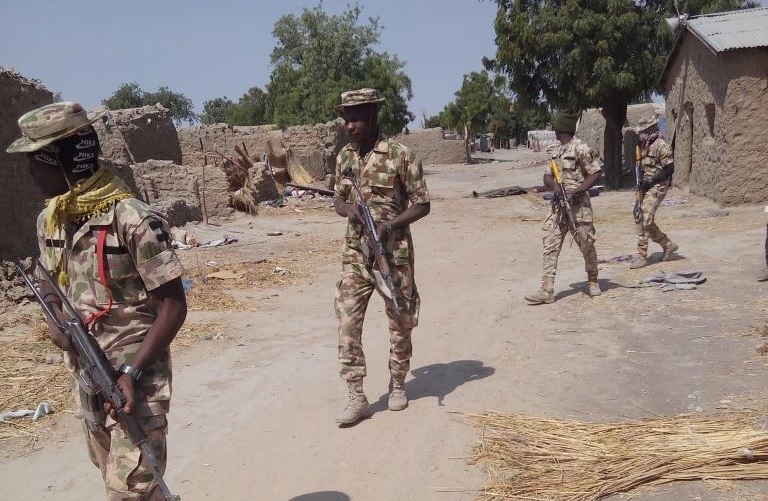

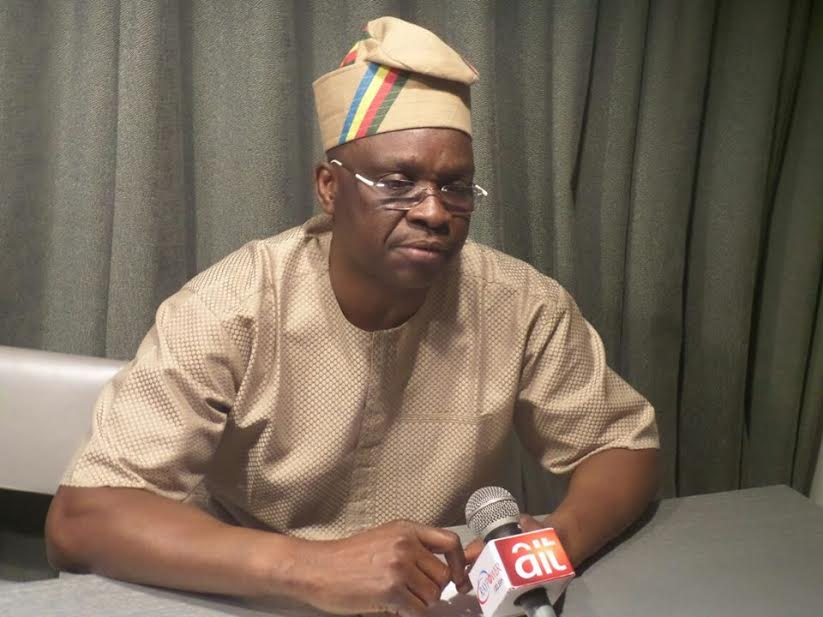
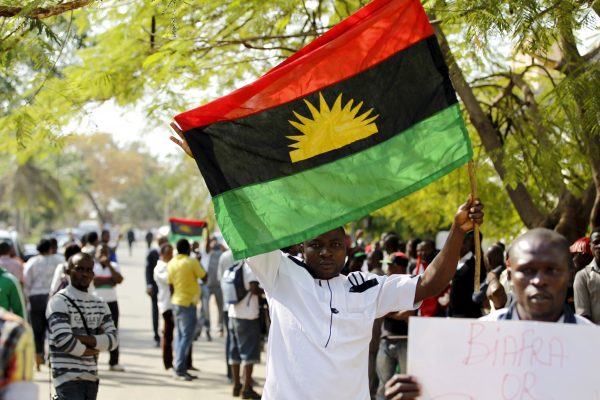
Fr, I enjoyed reading your article. Where you class the ongoing agitation, quit notice, Insurgency and militancy. Would you recommend the Tower of Babel model, which revolted against a single centre for a pluralistic one.